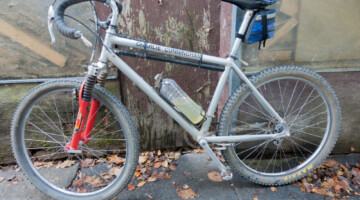In 2018, Geoff Kabush won the Iceman Cometh Challenge using an OPEN U.P.P.E.R. gravel bike equipped with Maxxis Aspen 2.1” tires.
At first glance, the concept of racing a gravel bike in a mountain bike race seems absurd—unless your name is John Tomac, or more accurately, Jacquie Phelan, who raced fully rigid—but Kabush’s victory is proof that the right setup can work in the right circumstances.
The race actually has a history of riders bringing a drop bar setup despite the popular choice being something more trailworthy. “I’ve actually done it on a cyclocross bike twice; some years, it’s totally the way to go,” Race Director Cody Sovis told Cyclocross Magazine. “It all comes down to the sand pits.”
The 30th edition took place on November 2, and some folks predicted drop bars to show up in force. “Kabush won on drop bars last year,” Sovis said before the race, “I think you’re going to see a ton of people try it this year.”
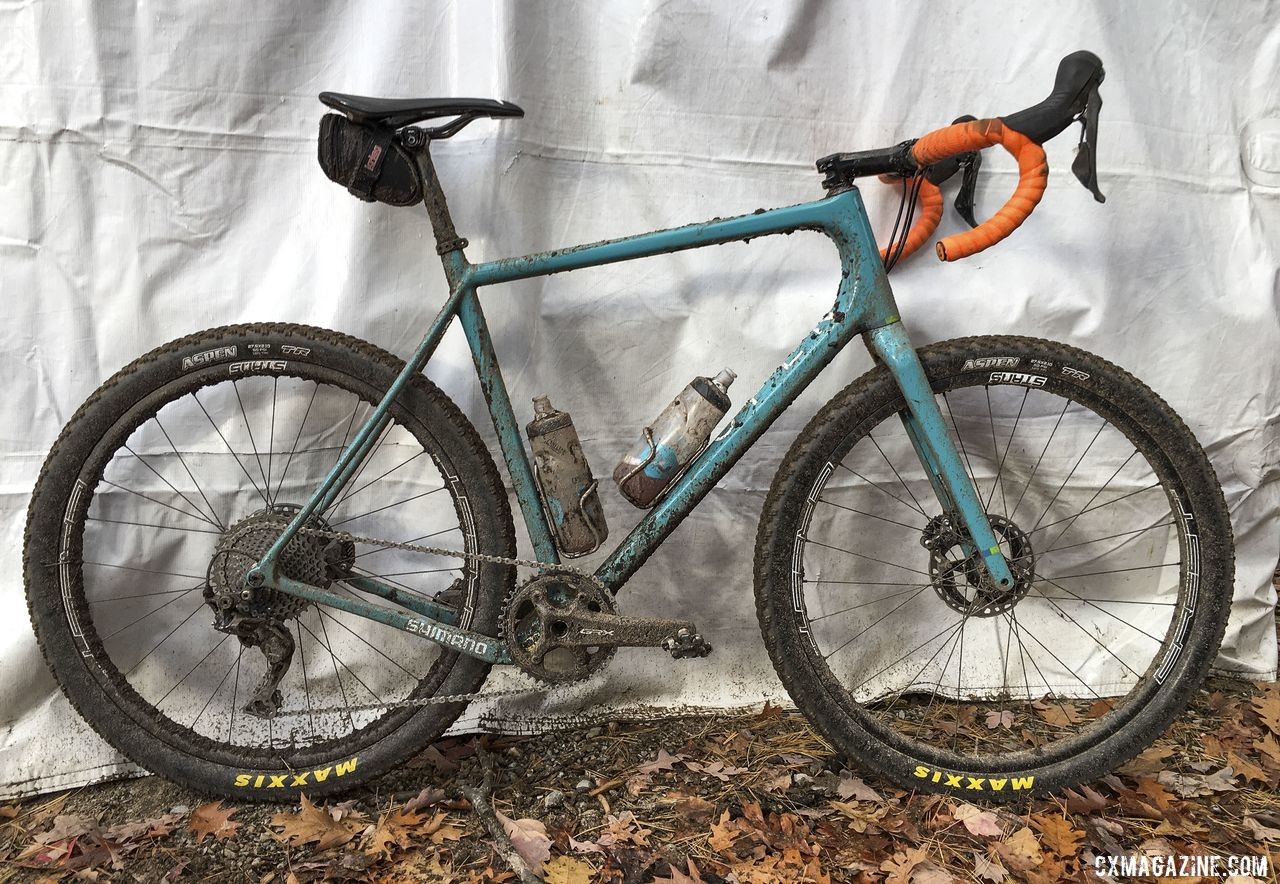
Geoff Kabush rode an Open WI.DE. at the 2019 Iceman Cometh Challenge. © B. Grant / Cyclocross Magazine
In the Elite wave, Kabush lined up with an OPEN WI.DE. and the same tires on which he won last year. Joining him was pro cyclocross privateer Jamey Driscoll, who brought the same Pivot Vault he is using this season, with a much wider than usual 2.1” Mavic Crossmax tire. He explained his thinking after the race, “The single biggest factor was that Kabush won last year on that setup.”
Although Alexey Vermeulen took the overall win and reminded everyone that Iceman Cometh is, in fact, a mountain bike race, Kabush stayed on the podium with a third-place finish and Driscoll rounded out the top 10.
The result left me wondering, especially after my own successful drop-bar run on my Specialized CruX, how the Iceman Cometh Challenge would fit into the emerging gravel category if it were founded today.
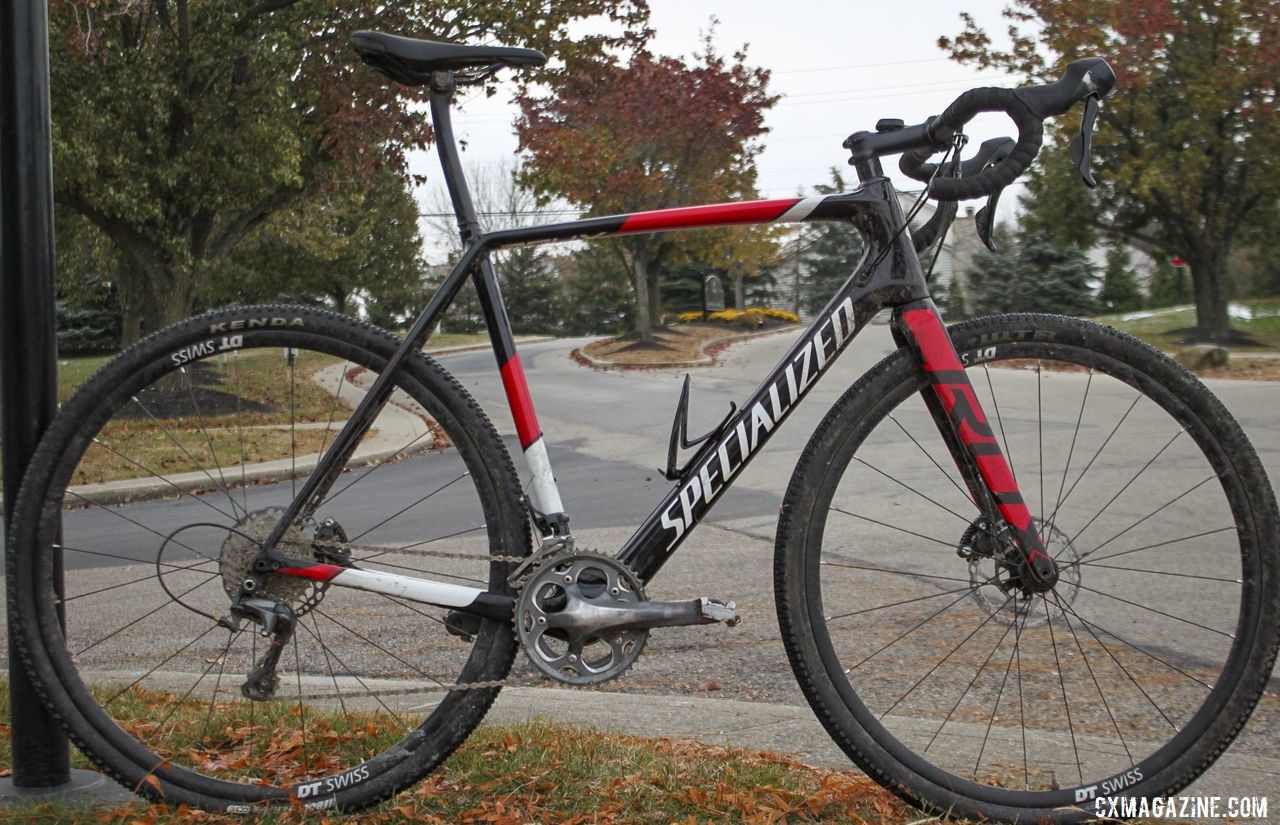
The author rode the 2019 Iceman Cometh Challenge on a Specialized CruX. © B. Grant / Cyclocross Magazine
Alternative History
Bell’s Iceman Cometh Challenge ran its first edition 30 years ago in 1989. At that time, mountain bikes were still evolving as a concept as was the racing format. The Iceman Cometh course is reminiscent of mountain bike racing’s early days and is comprised mostly of doubletrack, fire roads, and wooded singletrack.
The technicality of the route is largely dependent on the speed with which it’s ridden. “There wasn’t anything super technical in past years. I feel like anyone who’s ridden some technical cyclocross will have no problem riding the course,” Kabush told Cyclocross Magazine before the race.” Racing gets a bit more hectic but besides a few braking bumps in some singletrack you just have to pick your moments where to go fast.”
Likewise, early mountain bikes were do-it-all in nature, intended to do well on and off-road. They were at home on a variety of surfaces and were geared as such. Sound familiar?
The Specialized Stumpjumper is one of the longest-running lines of mountain bikes out there. Below, it is compared in its 1989 form to the bike I rode, a Specialized CruX, Kabush’s OPEN WI.DE. and Driscoll’s Pivot Vault.
1989 Stumpjumper vs. 2019 Drop Bar Bikes
| Specialized Stumpjumper (1989) | Specialized Crux (2019) | OPEN WI.DE. (2019) | Pivot Vault (2019) | |
| Chainstay Length | 429mm | 425mm | 420mm | 420mm |
| Bottom Bracket Height | 29.5cm | 28.6cm | ||
| Bottom Bracket Drop | 67mm (size 58) | 75mm (size M-XL) | 70mm (size L) | |
| Head Angle | 70.5 | 72.5 | 71.5 | 72 |
| Trail | 67mm | 59mm | 61mm | |
| Tire Size | 26x1.95” (559x495mm) | 700x45mm | 650x2.1” (584x53mm) | 650x2.1” (584x53mm) |
| High Gear Inch | 95.6 | 117.2 | 109.6 | 109.6 |
| Low Gear Inch | 24.1 | 29.7 | 30.1 | 35.6 |
While there are limited measurements available from the 1989 Specialized catalog, the numbers that are available show enough of the picture. Thirty years ago, a mountain bike (and even some road bikes), was pretty similar in design and features to the cyclocross and gravel bikes of today. Therefore, it’s unsurprising that a modern gravel bike can be ridden with success at Iceman Cometh.
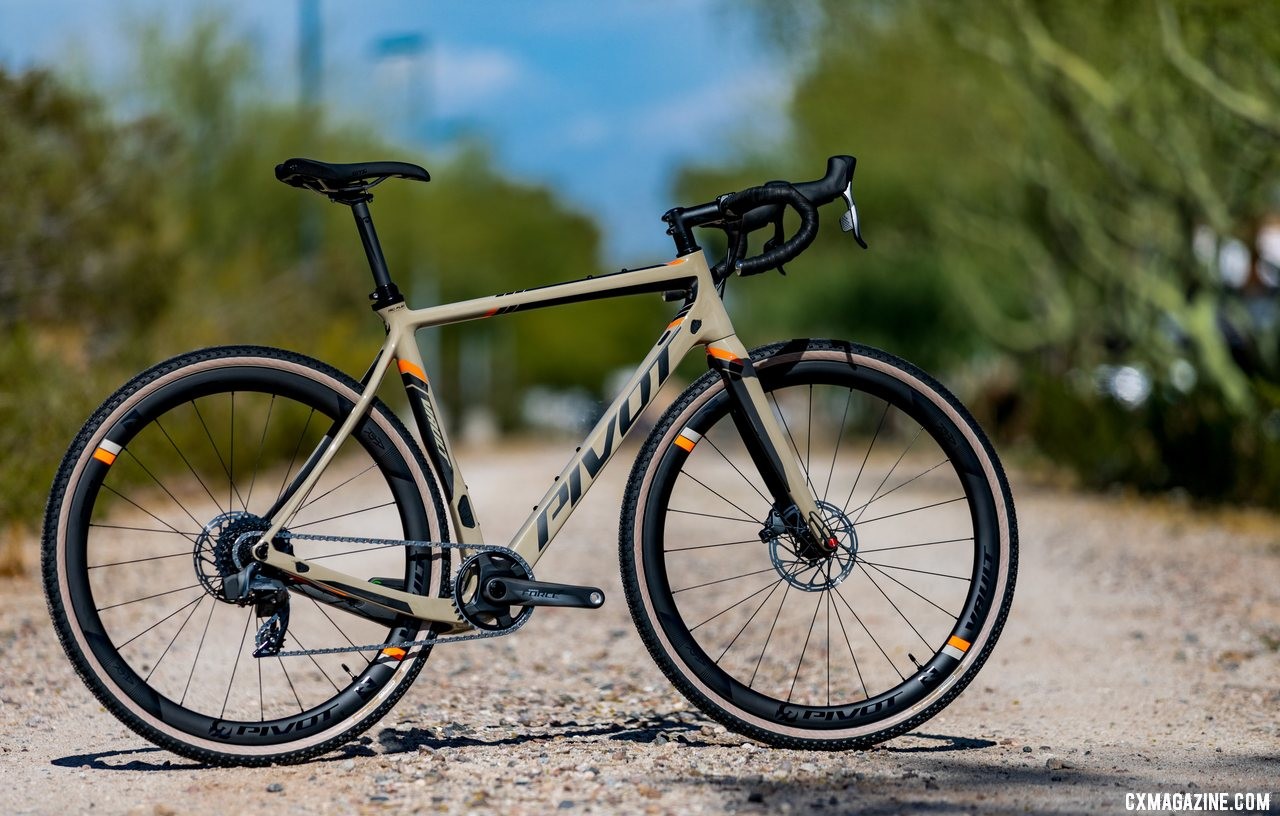
The new Pivot Vault has a lot in common with mountain bikes of old. Pivot’s all-new versatile Vault cyclocross / gravel bike with a SRAM Team Force 1 AXS eTap build.
Dirty Heretic
I would go a step further, though, and suggest that if the race began today we may be calling it a gravel race. One of the most intriguing things about gravel is the way that diverse terrain equalizes bike choice, as the last few editions of Iceman have shown.
One could compare, for example, the courses of much younger races such as Rasputitsa and the Red Kite Ronde, the former known for a stretch of course known as Cyberia and latter overlapping a substantial amount of the Mohican 100 mountain bike race route, and many parallels can be drawn. With both technical riding and extended stretches of pedaling in these races, almost any bike can be an advantage on at least part of the course and participants can be seen on a variety of equipment.
Why then, if Iceman Cometh is a mountain bike race, are younger events with comparable course features branded gravel?
I would refer back to the evolution of the mountain bike. In the last 30 years, mountain bikes have become more specific to the places they are ridden, which have become more specifically built for the purpose of riding.
The result? Bikes that are more capable more technical courses, but bikes that are less useful outside their specific context. Compare the same 1989 Stumpjumper to its 2019 counterpart, and the race-oriented Epic HT:
1989 Stumpjumper vs. 2019 Mountain Bikes
| Specialized Stumpjumper (1989) | Specialized Stumpjumper (2019) | Specialized Epic HT (2019) | |
| Chainstay Length | 429mm | 437mm | 430mm |
| Bottom Bracket Height | 29.5cm | 34.2cm | 30.9cm |
| Bottom Bracket Drop | 330mm | 630mm | |
| Head Angle | 70.5 | 66.5 | 68.5 |
| Trail | 67mm | 107mm (size L) | 101mm (size L) |
| Tire Size | 26x1.95” (559x495mm) | 29x2.6” (622x660) | 29x2.3” (622x584mm) |
| High Gear Inch | 95.6 | 89.1 | 87.3 |
| Low Gear Inch | 24.1 | 17.8 | 17.4 |
Across the board, mountain bikes have gained suspension and trail, their tire capacity has grown and their gear range has dropped as a response to the increasingly technical places they are ridden. It could be argued that the mountain bike has become so niche that gravel bikes exist to fill the void of a do-it-all bike, like the mountain bikes available some 30 years ago.
It’s not that much of a reach, then, to suggest that the industry has come full circle and once again provides bikes that are at home in the types of terrain common in early mountain biking. Kabush seemed to agree, “I wish more gravel events had sections like Iceman because it is a lot of fun to ride drop bars on that type of terrain,” he said. “The smooth singletrack is a lot of fun to rip and lean into corners with narrower bars. Iceman has a few little harsher, rough sections but if you’ve raced cyclocross it is no problem on the drop bars.”
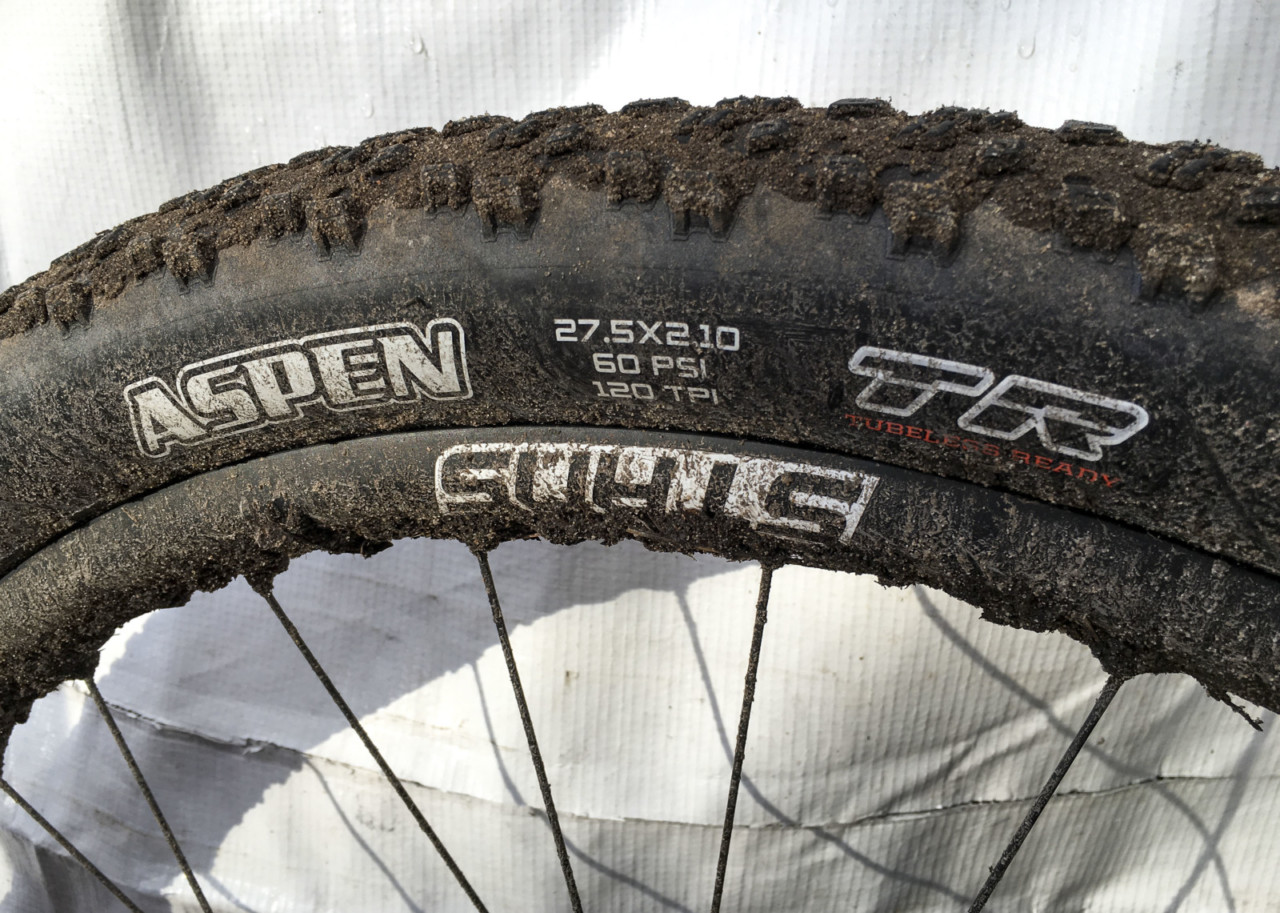
Geoff Kabush ran 27.5″ x 2.1″ mountain bike tires at Iceman in 2019. © B. Grant / Cyclocross Magazine
Although Driscoll seemed disappointed in his result, he didn’t blame his bike choice. “Overall the bike did amazing and being familiar with how it handles in mud was an advantage,” he said. “Unfortunately the motor was the limiting factor. I just had a bad day on the bike.”
As for my own experience, I spent the drive to Traverse City wondering what I had done as I passed car after car porting hardtails and trail bikes and looked at the fat bike my travel companion had brought in the rearview mirror.
Once on course, however, I appreciated the tall gears and drop bars while trying to bridge gaps on doubletrack. I felt at home on the bike in the sand and mud. I never once wished for a different bike but then again, 30 years ago my CruX, at 19lb with 45mm tires and the ability to stop in mud, would have been as good as it gets.
The influx of drop bar bikes at the 2019 Iceman Cometh Challenge that some predicted did not really happen—in addition to Driscoll and Kabush I saw maybe a handful in my amateur race—but as we have seen at races such as the Crusher in the Tushar and others, bike choices can change over time.
The Iceman Cometh might retain its mountain bike roots, but as gravel bikes continue to develop, it seems chances are good we will see more Iceman-style races that fall into the growing gravel discipline.
























